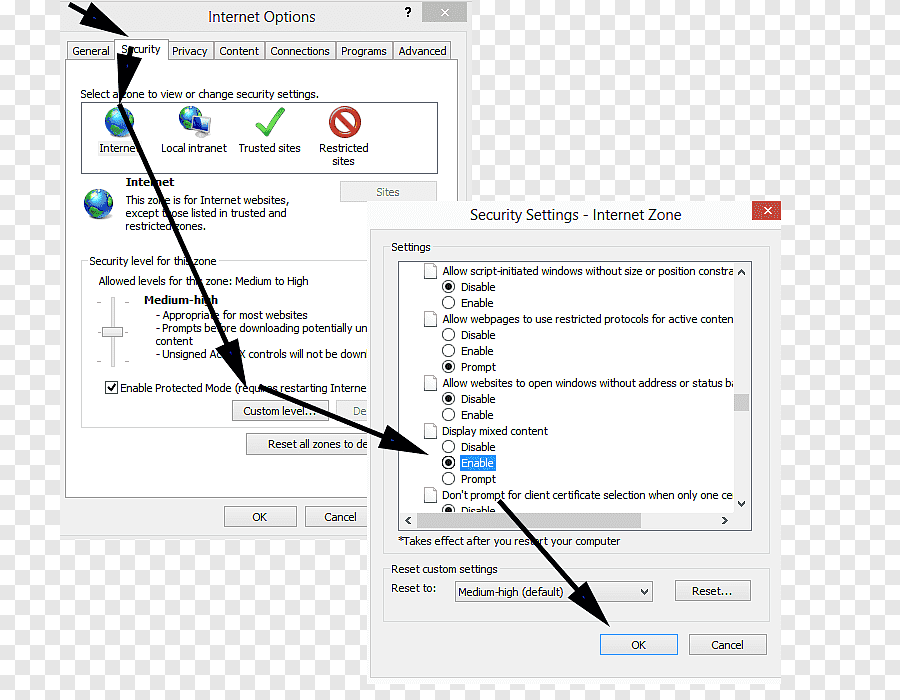In the realm of web browsing, Chrome stands as a titan, renowned for its speed, security, and user-friendly interface. However, for users accustomed to certain functionalities, such as ActiveX controls, the experience might seem incomplete. ActiveX, a set of technologies developed by Microsoft, allows interactive content to be embedded within web pages, enabling richer user experiences. While Chrome initially phased out support for ActiveX due to security concerns, there are still scenarios where users may need to enable it for specific applications or websites. In this article, we delve into the intricacies of allowing ActiveX in Chrome, offering a comprehensive guide to enhance your browsing experience.
Understanding ActiveX:
ActiveX controls are small applications that enable developers to create interactive content for web pages. They can range from simple animations to complex multimedia applications. These controls often integrate seamlessly with other software components, providing enhanced functionality and interactivity. Common use cases for ActiveX include multimedia playback, document viewing, and interactive forms.
Why Enable ActiveX in Chrome?
Despite Chrome’s default stance against ActiveX, there are instances where enabling it becomes necessary. Many legacy web applications and enterprise systems still rely on ActiveX controls for essential functionalities. Moreover, certain specialized websites or business applications may require ActiveX to operate correctly. By enabling ActiveX in Chrome, users can ensure compatibility with such systems and access the full range of features they offer.
Step-by-Step Guide to Allowing ActiveX in Chrome:
- Launch Chrome Settings: Begin by opening Google Chrome on your desktop or laptop.
- Access Advanced Settings: In the top-right corner of the browser, click on the three-dot menu icon to open the Chrome menu. From the dropdown menu, select “Settings.”
- Navigate to Privacy and Security: Within the Settings tab, scroll down to find the “Privacy and security” section. Click on it to expand the options.
- Select Site Settings: Under the “Privacy and security” section, locate and click on “Site settings.”
- Find ActiveX Controls: Scroll down the list of site settings until you find the “Additional permissions” section. Look for “ActiveX controls and plug-ins” and click on it.
- Enable ActiveX: Toggle the switch next to “ActiveX controls and plug-ins” to enable it. This action allows Chrome to run ActiveX controls on websites.
- Manage Exceptions (Optional): If you only need ActiveX for specific websites, you can manage exceptions by clicking on “Add” next to the “Allow” or “Block” lists. Enter the URL of the website and choose whether to allow or block ActiveX controls on it.
- Restart Chrome: Once you’ve enabled ActiveX controls, it’s recommended to restart Chrome to apply the changes fully.
- Verify Functionality: After restarting Chrome, visit the website or application that requires ActiveX controls. If everything is configured correctly, you should now be able to interact with the ActiveX content seamlessly.
Best Practices and Considerations:
- Security Concerns: While enabling ActiveX can enhance functionality, it also poses security risks. ActiveX controls have a history of being exploited by malicious actors to install malware or steal sensitive information. Therefore, it’s crucial to only enable ActiveX for trusted websites and applications.
- Regular Updates: Keep Chrome and ActiveX controls up to date to mitigate security vulnerabilities. Chrome automatically updates itself, but you should also ensure that any ActiveX controls you use receive regular updates from their developers.
- Use Alternatives When Possible: Whenever feasible, consider alternatives to ActiveX controls, such as HTML5, JavaScript, or browser extensions. These technologies offer similar functionalities while adhering to modern web standards and security practices.
Conclusion:
Enabling ActiveX in Chrome can be a practical solution for accessing legacy web applications and specialized content that rely on this technology. By following the step-by-step guide outlined in this article and exercising caution regarding security implications, users can enjoy a more comprehensive browsing experience without compromising on safety. However, it’s essential to use ActiveX judiciously and prioritize security at all times to mitigate potential risks associated with its usage.



